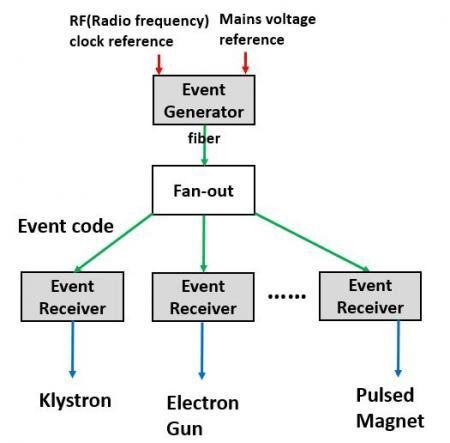2020.03.05
The Diagnosis of Event Timing Control System in particle accelerator
SOKENDAI Student Dispatch Program program year: 2019
Accelerator science 王迪
加速器科学コース

The large scientific experiment like particle accelerator has many devices and components and these devices must work in a precisely sequence. One task of the accelerator timing system is to control the injection by triggering the gun and firing the transfer line components like injection and extraction pulsed magnets at correct times. Also, other devices like the beam diagnostic components have to be synchronized to the passage of the beam. Thus, the Event Generator is used to generate different event codes and to send them to the Event Receivers which locate at all over the installation to control all the devices. Then, the Event Receivers will generator actual signals with some delay values to the physical devices.
The brief description:
The timing system sends event codes as trigger signals to the accelerator components to synchronize the operation. Since the speed of the beam in the accelerator is almost the same as light, the minimal time interval of these event codes is around several nanosecond. The error of these fast-transmitted event codes might cause bad beam and damage the accelerator.
So, we developed an event timing diagnostic system to diagnose the timing system and ensure the correctness of the signal delivery by recording all the event codes data and analysing them. Finally, during several months' monitoring, we found two kinds of timing system fault mode through our diagnostic program. Then, we propose suggestions to the operator based on our data and contribute to keep the stable operation of our accelerator.
Conference
ICALEPCS (17th Biennial International Conference on Accelerator and Large Experimental Physics Control Systems), New York, US, October 5 - 11, 2019.
What I learned and achieved during the visit
I attended the MRF (a company's name) timing system workshop and MicroTCA (a kind of modular crate) workshop. The workshop chairman briefly introduced the MRF timing system and MicroTCA and give some example of the system. Later other users shared some experience on using the system and propose some suggestions on the future development of the collaboration. During the conference, I delivered an oral presentation and communicates with other researchers during the post session.
Accelerator Science, Di WANG
